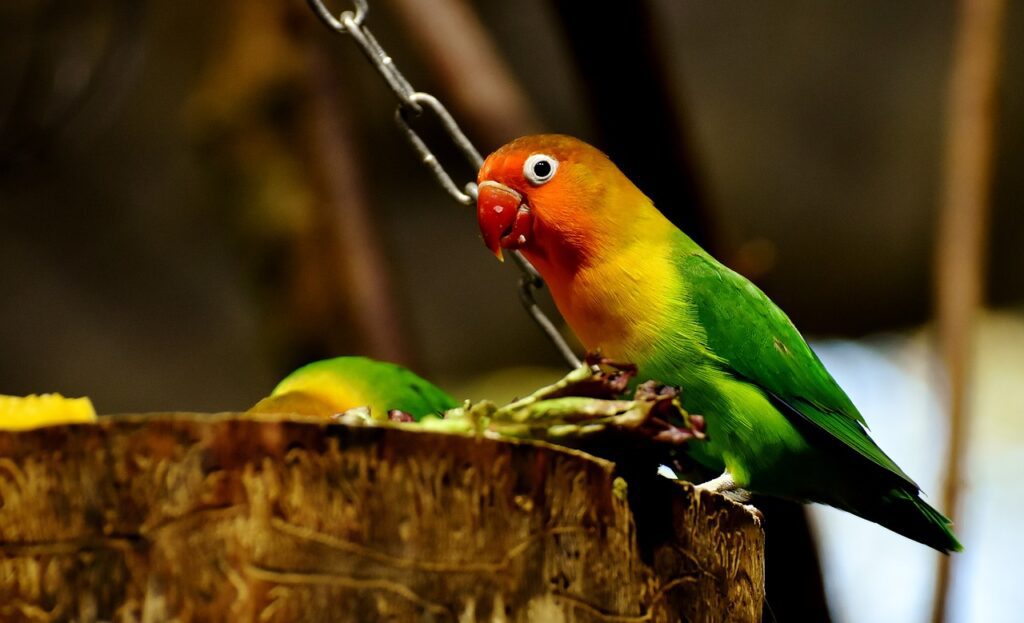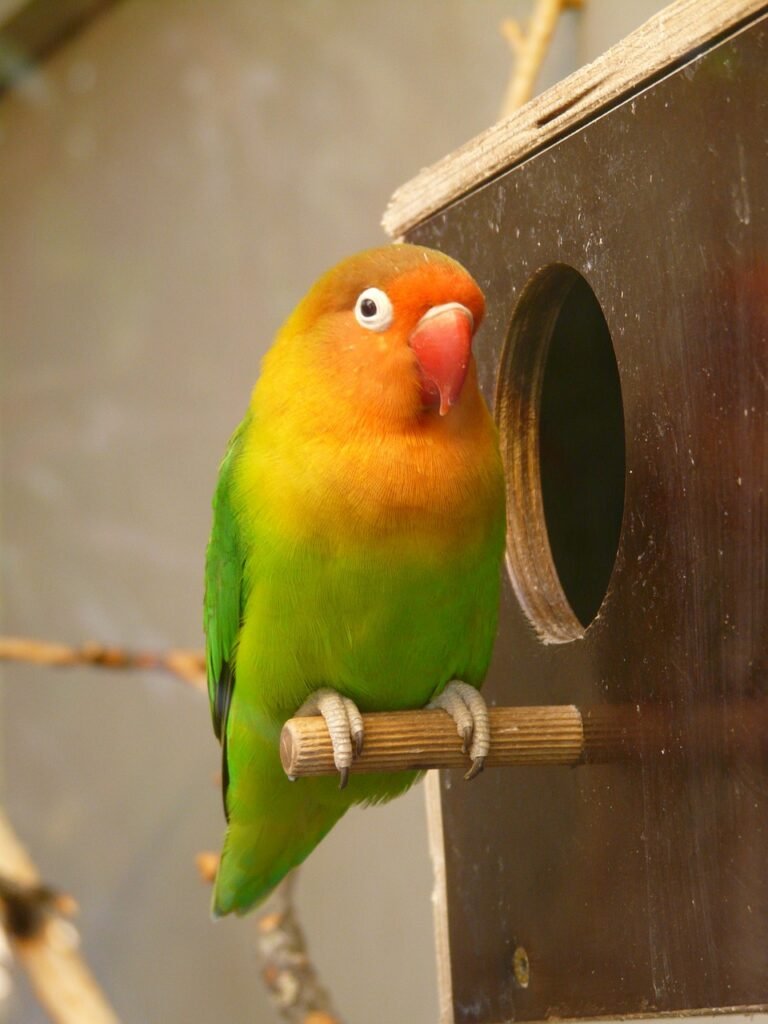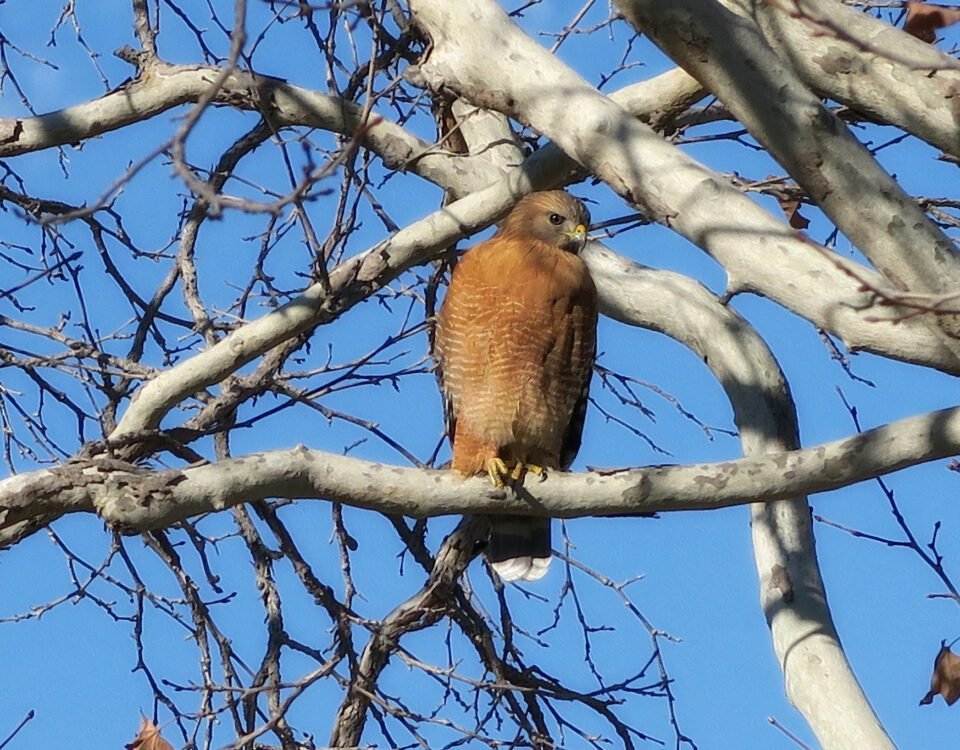


16 Amazing Birds That Talk like Humans to Keep as Pets
December 27, 2023


Is It True That Hitler Had a Parrot? [Know The Truth Now!]
December 27, 2023If you’ve recently welcomed a lovebird or are considering bringing one or more into your home, you may be curious: can lovebirds speak? Listening to a bird mimic your words and whistle melodies is delightful, but not every bird species is skilled at vocal mimicry. However, here’s a quick answer:
Indeed, lovebirds are known for their talkative nature, seldom having a silent moment. Similar to many parrots, they can mimic human speech. Yet, lovebirds are less skilled compared to more proficient-speaking species like ringneck parrots, African grey parrots, or budgies. They are more proficient in replicating simpler noises, like the sound of doorbells and microwaves.
Discover everything about lovebirds’ ability to learn to talk and ways to motivate your bird to mimic human speech.
Do Lovebirds Talk?
Lovebirds, commonly kept as pet parrots, are highly favored among pet owners. Renowned for over a century as one of the most cherished African parrot species, they are admired for their beauty and intelligence. Their vocalizations might make it seem like they are conversing with you.
However, lovebirds typically don’t engage in the kind of verbal interaction you might expect. They prefer communicating with each other rather than with humans. Although not highly vocal in speech, they produce a delightful song, considered one of the most pleasant among pet parrots.


Lovebirds
It’s not advisable to keep just a single lovebird, so owning more than one is common, and their vocalizations can increase in volume with the size of the group. In their natural habitat, they use these sounds to communicate within their flocks.
Some birds show a greater aptitude for mimicking human speech than others and are known to develop this skill from a very young age.
Familiar Sounds Produced By Lovebirds
Here are seven sounds commonly made by pet lovebirds, along with their possible meanings:
Clicking
This sound is often a sign of contentment and relaxation in lovebirds. When they make a clicking noise with their tongue, it usually indicates they feel safe and comfortable in their environment.
It can also be a form of communication between bonded pairs, expressing affection and companionship. Clicking is a subtle, gentle sound, differing significantly from their louder vocalizations, and is often heard during peaceful moments.
Whistling
Lovebirds are known for their musical whistling. This sound can vary in pitch and length and is often used to attract attention or express happiness.
Whistling might also be a form of self-entertainment or a way to engage with their human companions. It’s common for lovebirds to mimic the whistles they hear regularly, showing their ability to learn and replicate sounds.
Chirping
Chirping is a common sound among lovebirds and is usually a sign of a happy and healthy bird. These short, repetitive sounds can be a form of casual communication, indicating contentment, or be used to interact with other birds.
Chirping is often heard throughout the day and can vary in intensity and frequency depending on the bird’s mood and surroundings.
Screaming
Screaming in lovebirds is a louder, more intense form of communication. It can indicate distress, fear, or excitement. Sometimes, it responds to environmental stressors, like a perceived threat.
However, screaming can also be a way to express joy or excitement, especially during play or when greeting their human family members. It’s essential to understand the context to interpret this sound correctly.
Crooning
Crooning is a soft, musical sound that lovebirds make, often associated with affection and bonding. It’s a soothing, gentle noise that might be directed towards a mate, their human companions, or even themselves as a form of self-soothing.
Crooning reflects a sense of security and contentment, and it’s a sound you might hear when your lovebird is relaxed and comfortable in your presence.
Squawking
Squawking is a louder, more urgent form of vocalization. It can be a sign of alarm or a way to assert dominance or express annoyance. Squawking is a typical response if a lovebird feels threatened or wants to assert its presence.
It might also be used in a household setting to gain attention or communicate a need, such as hunger.
Growling
Growling in lovebirds, although less common, can indicate annoyance or discomfort. It’s a low, throaty sound that usually means the bird wants to be left alone or feels threatened.
Growling can be a warning signal to back off, and owners must respect this communication and give their pets space when they hear it.
Can Lovebirds Mimic Human Speech?
Like other members of the parrot family, lovebirds possess some ability to mimic human speech. However, their mimicking skills are not as advanced as those of other more vocal parrot species.


Lovebirds Mimicing Human Sounds
Training lovebirds to speak can be lengthy; even with training, they may not articulate words distinctly. Their vocal quality is not as suited for precisely imitating human speech.
As a result, lovebirds are not typically recognized among bird species known for their speech mimicry. If you want a talking bird, consider opting for a different bird species better known for this ability.
Do Lovebirds Sing?
Yes. These cheerful birds often vocalize when they are relaxed and happy.
However, their vocalizations don’t mean singing in the conventional sense. Lovebirds’ sounds are distinct from human singing and might be perceived as ordinary noises by someone unfamiliar.
Since lovebirds are not adept at mimicking human speech, they also lack proficiency in what we typically consider singing. Therefore, lovebirds might not be your best choice if you’re searching for a pet bird that can sing melodiously.
Training Your Pet Lovebirds To Talk
If you hope to teach your lovebird to mimic phrases or tunes, remember that not all lovebirds may be open to learning. Some may pick up speech easily, while others may persistently resist any attempts to speak.
Several factors can affect your lovebird’s capacity to learn speech, including:
- Age: Younger lovebirds are generally more receptive to learning new things, including speech. Though older birds can learn, starting early often yields better results.
- Upbringing and Tameness: A hand-raised lovebird is more likely to view you as part of its flock and may be more open to training. Such birds might mimic speech more readily compared to those that are untamed.
- Your Role: The trainer’s commitment is a significant factor in a parrot’s learning process, including lovebirds. Teaching a parrot to talk demands considerable time, patience, and consistent repetition.
Tips On How To Train Your Lovebirds To Talk
- Choose Easy Words: Start with something simple, like the bird’s name, or short phrases like “pretty bird” or “love you.” If your bird learns these, you can try harder ones. A few-note whistle can also work.
- Make Your Bird Happy: Your lovebird should feel happy around you. Even if it’s not used to being handled, keep it healthy with good food and fun toys. Offer treats or playtime when you’re near its cage.
- Connect Talking with Happiness: Talk to your lovebird often. It might start linking your voice and words with good feelings, making it want to copy you.
- Repeat Often: Keep saying the word or phrase you want your bird to learn. You should do this for weeks or months before it tries to copy.
- Use Recordings: You can record your voice or play training videos online. But talking to your bird directly works best.
- Give Rewards: If your lovebird tries to speak, give it a treat right away and repeat the word. Keep treats close for this.
Remember, teaching your lovebird to talk might not always work, but with patience and effort, you might succeed.
Also, Read: Do Birds Kiss Just Like Humans? Find Out Here
Conclusion
Lovebirds are charming feathered pets that make excellent companions for many people. As an owner, it’s natural to anticipate that these parrot family members might talk. However, it may surprise you that lovebirds are less skilled in speech than their parrot relatives.
They can make sounds but aren’t particularly adept at imitating human speech. You can encourage them to achieve their fullest potential with patience and diligent teaching.
Ultimately, regardless of their ability to speak, all pets, including lovebirds, are delightful and deserve to be cherished and cared for with love.
![Do Lovebirds Talk? [Teaching Lovebirds to Talk: Tips and Techniques]](https://petsfm.com/wp-content/uploads/2023/12/Screenshot-2023-12-27-at-4.42.34 PM-634x630.jpg)


